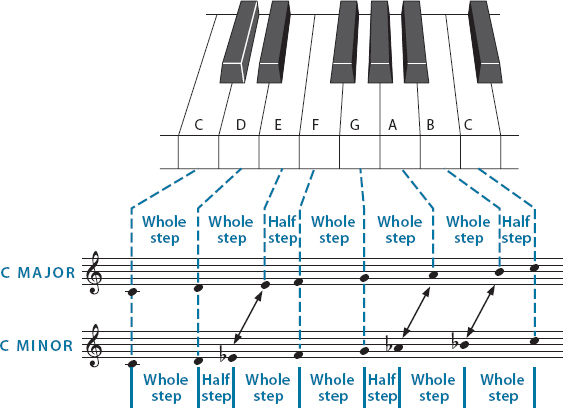Listening for the Major and Minor Modes
On paper, it is easiest to show the difference between major and minor if we compare major and minor keys that share the same tonic. So yet another diagram, below, compares C major with C minor. C minor is derived by duplicating, from C to C, the minor-


The difference between the modes is easy to see. Three of the scale degrees are lower in the minor (hence the term minor, of course); they are the pitches connected by arrows in the diagram. The arrangement of intervals is not the same when you sing up or down the scales, and this in turn makes a great difference in the feel of melodies built from these scales.
Hearing the difference between music in the major and minor modes comes easily to some listeners, less easily to others. As a result of the three lower scale degrees, music in the minor mode tends to sound more subdued, more clouded than music in the major. It is often said that major sounds cheerful and minor sounds sad, and this is true enough in a general way; but there are many exceptions, and in any case people can have different ideas about what constitutes sadness and cheerfulness in music.
Learning to distinguish the major and minor modes requires comparative listening. Listen especially for the third scale degree up from the tonic. “Joshua Fit the Battle of Jericho” and “We Three Kings” are both in the minor mode. Singing them through, we can practice recognizing the characteristic minor-

Compare this with the third note up from the tonic at the end of major-
